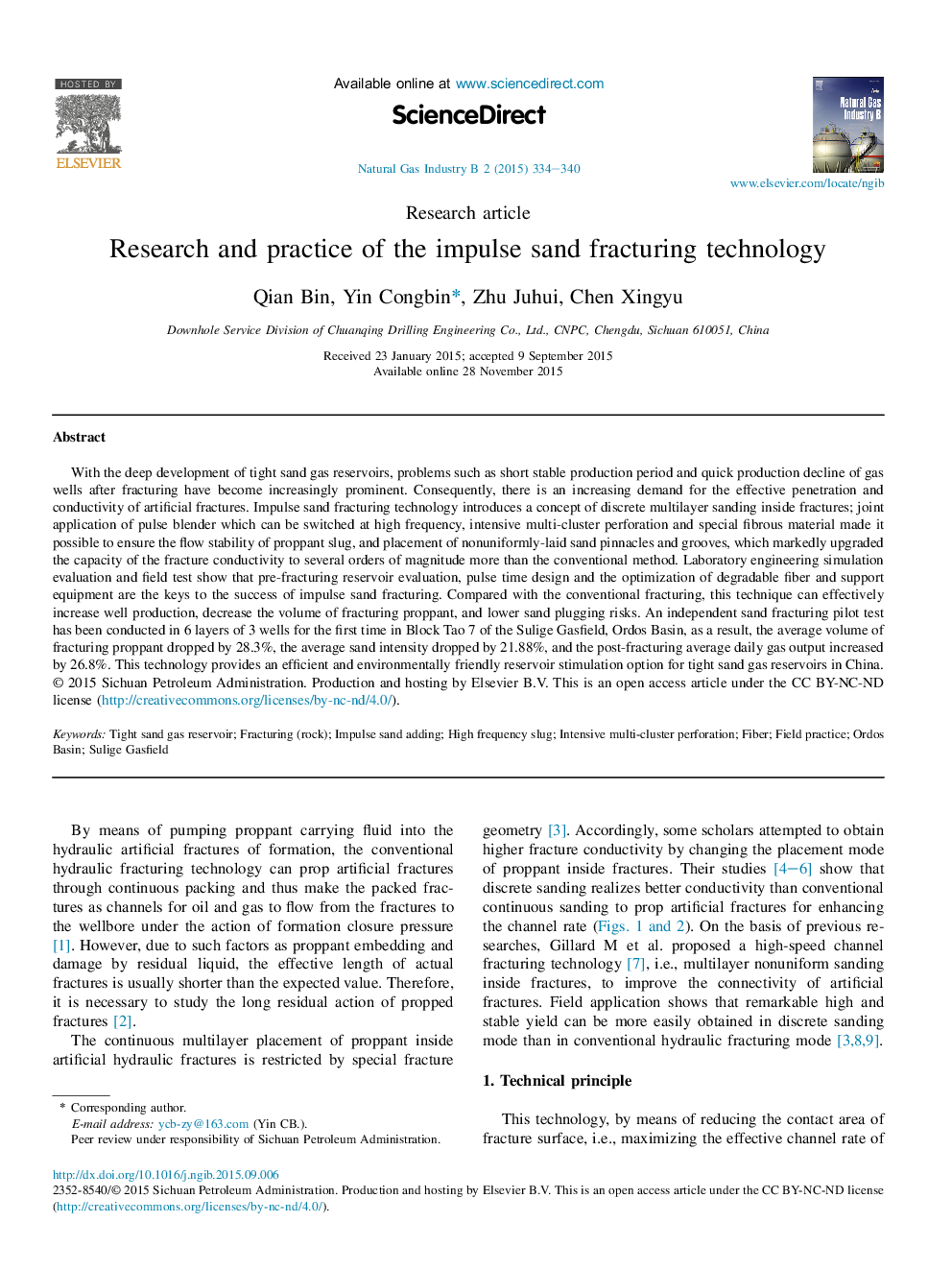| Article ID | Journal | Published Year | Pages | File Type |
|---|---|---|---|---|
| 1747829 | Natural Gas Industry B | 2015 | 7 Pages |
Abstract
With the deep development of tight sand gas reservoirs, problems such as short stable production period and quick production decline of gas wells after fracturing have become increasingly prominent. Consequently, there is an increasing demand for the effective penetration and conductivity of artificial fractures. Impulse sand fracturing technology introduces a concept of discrete multilayer sanding inside fractures; joint application of pulse blender which can be switched at high frequency, intensive multi-cluster perforation and special fibrous material made it possible to ensure the flow stability of proppant slug, and placement of nonuniformly-laid sand pinnacles and grooves, which markedly upgraded the capacity of the fracture conductivity to several orders of magnitude more than the conventional method. Laboratory engineering simulation evaluation and field test show that pre-fracturing reservoir evaluation, pulse time design and the optimization of degradable fiber and support equipment are the keys to the success of impulse sand fracturing. Compared with the conventional fracturing, this technique can effectively increase well production, decrease the volume of fracturing proppant, and lower sand plugging risks. An independent sand fracturing pilot test has been conducted in 6 layers of 3 wells for the first time in Block Tao 7 of the Sulige Gasfield, Ordos Basin, as a result, the average volume of fracturing proppant dropped by 28.3%, the average sand intensity dropped by 21.88%, and the post-fracturing average daily gas output increased by 26.8%. This technology provides an efficient and environmentally friendly reservoir stimulation option for tight sand gas reservoirs in China.
Related Topics
Physical Sciences and Engineering
Energy
Energy Engineering and Power Technology
Authors
Bin Qian, Congbin Yin, Juhui Zhu, Xingyu Chen,
